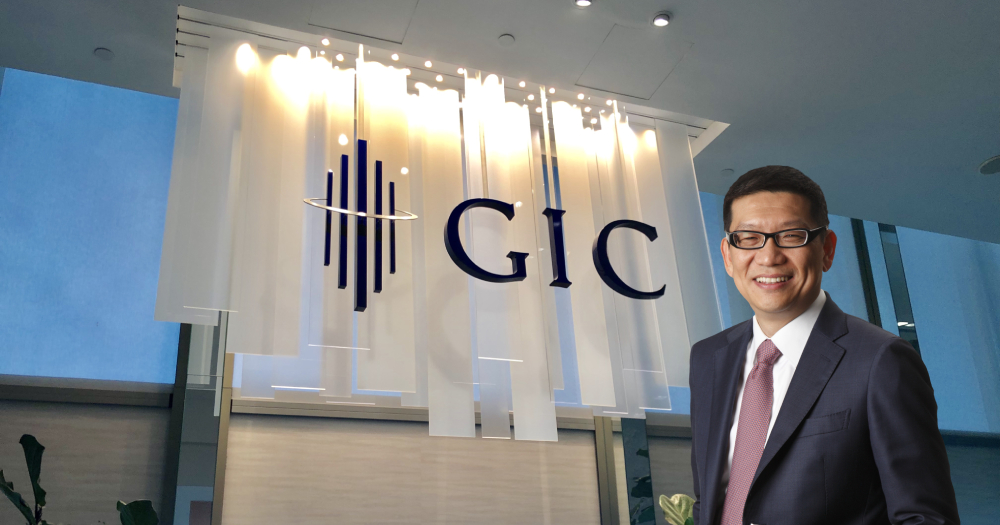GIC will continue to look to Asia as for investment opportunities amidst uncertainty in global markets.
The sovereign wealth fund indicated in its annual report for 2018/19 that it would take a "constructive view on Asia's long-term future".
The report also cited three factors that GIC believed would continue to drive growth in Asia.
These included the region's general attitude towards opening up and lowering trade barriers, improvements in institutions, and the belief that its people and businesses were driven and adaptable to change.
US-China trade war
However, GIC also noted geopolitical tensions as a challenge that Asia had to overcome in order to reach its full potential.
The report cited the U.S.-China trade war as causing a slowdown in regional trade.
Speaking to the media, Chief Executive Officer Lim Chow Kiat added that GIC was concerned that prolonged tensions could see a reversal of the benefits gained from globalisation.
"Of course we believe that even in such a scenario, China will still be able to grow. They will be able to develop their industry and their economy. But certainly, that's not ideal. We would very much prefer a globalised world."
Group Chief Investment Officer Jeffery Jaensubhakij, also indicated his belief that growth could still be achieved:
"As the U.S.-Chinese tensions are pushing and pulling different industries, there will be some that could be badly hurt, but there are some that will grow as a result."
The report also mentioned Asia's need to overcome labour, natural resources, and environmental constraints.
"Some countries like China, Japan, and Thailand are ageing and their labour forces are shrinking," the report said while adding that there was a need for better regulation and into green technology to address environmental concerns.
Hopeful for the long-term
Lim remained hopeful that in the long-term, Asia would present good investment opportunities, despite the recent slowdown in global growth.
"We would expect, let's say, the Chinese middle-class size to continue to grow. That would be an important investment field. We expect India to continue to grow, and that will bring along hundreds of millions of people. That should be a very significant investment opportunity."
"There are some of these very long secular trends that for a long term investor like GIC, we must not lose sight of. Even as we worry about all these headlines that we see every day," he said.
Furthermore, GIC wrote on two other themes that gave them confidence in Asia's potential:
- Continued investments in infrastructure and human capital, such as the Belt and Road Initiative
- and growth in deeper regional integration
One-third of GIC's portfolio in Asia
Investments in Asia, excluding Japan, currently make up about 20 per cent of GIC's portfolio. Japan forms another 12 per cent of GIC's portfolio.
The largest chunk of investment belongs to the U.S. — 32 per cent.
When asked if he expected Asia to take up a larger proportion of the portfolio moving forward, Lim said: "Going forward if Asia continues to grow strongly — as it has in the last 30, 40 years — I think the chances of Asia taking up more of our exposure are good."
"It really depends on the investment opportunities we find. Because high growth per se does not necessarily translate into good investment opportunities," he added.
"But long term we can see that the growth prospects are very positive and hence, I would say there's a really good chance that Asia will take up a bigger percentage."
How does GIC invest in Asia?
According to its report, GIC targets companies and sectors that benefit from current or future drivers of the economy, and invests through the public and private markets across the region.
This is because high economic growth does not automatically mean higher investment returns.
As such, GIC has been an early investor in Asia, beginning with Japan in the 1980s, and subsequently expanding to "Emerging Asia" in the 1990s, with offices currently in Beijing, Mumbai, Seoul, Shanghai and Tokyo.
Examples of such investments in Asia over the past year include:
- Vinhomes, the residential property development unit of Vietnamese company Vingroup,
- Bharti Airtel, an Indian telecommunications company,
- Techcombank, one of the commercial banks in Vietnam,
- CStone Pharmaceuticals, a biopharmaceutical company focusing on the development of innovative drugs in immuno-oncology in Suzhou, China,
- Linklogis, a supply chain financing provider in China
- Shanghai's tallest twin towers, along Huangpu River on North Bund
- Burning Rock, a Chinese biotech company
- Ant Financial, a Chinese fintech company that is the highest valued in the world
In the earlier years, GIC invested indirectly through MNCs, given their better governance and liquidity.
GIC acknowledged however, that the need for direct exposure has since risen, given the rising number of strong and unique businesses established by domestic Asian firms.
With regard to China, the report highlighted that,"GIC was among the earliest recipients of Qualified Foreign Institutional Investor (QFII) and RMB QFII (RQFII) quotas and was one of the first foreign participants in its(China's) interbank bond market."
In underlining Lim's statement that the portfolio for Asia will expand with the region's continued growth, the report elaborated:
"GIC focused on growing the Asia portfolio given our belief that the region will benefit from sustained structural improvements and outperform in the long term."
Image collage from Andrew Koay and GIC
If you like what you read, follow us on Facebook, Instagram, Twitter and Telegram to get the latest updates.
